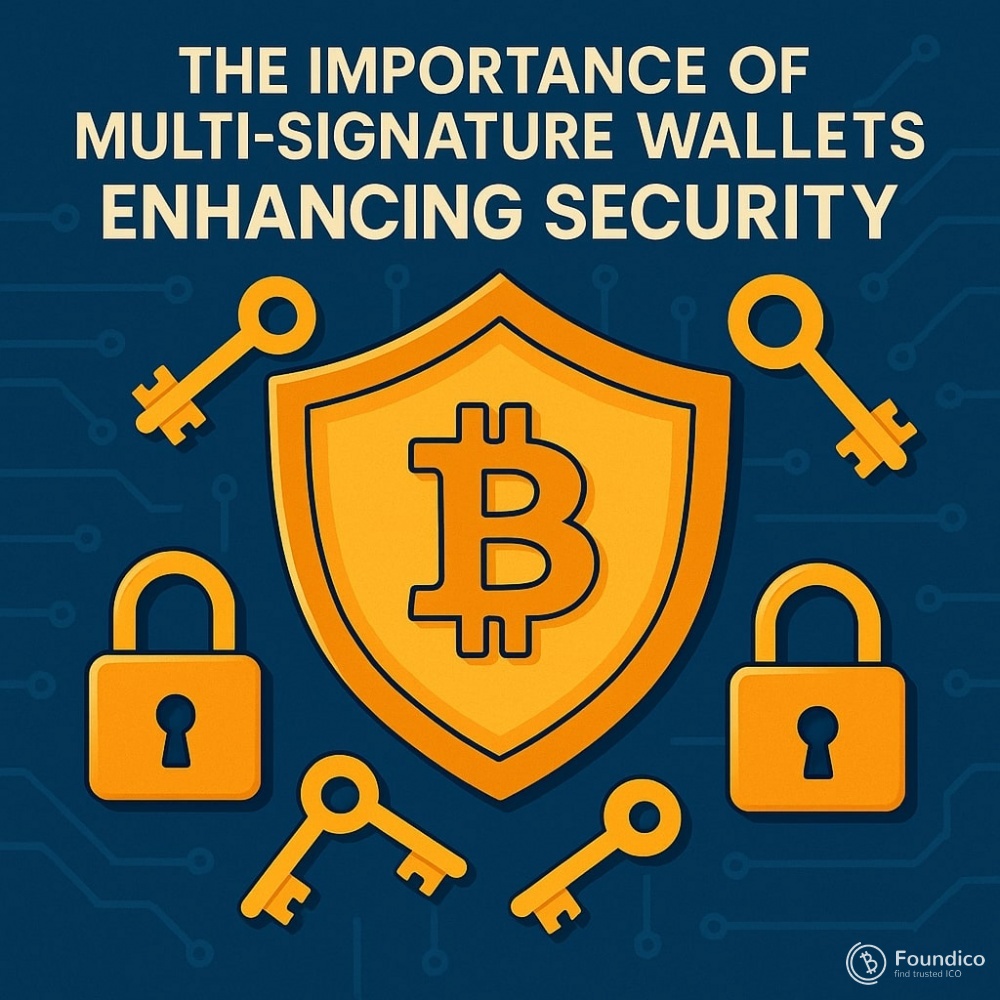The Importance of Multi-Signature Wallets in Enhancing Security

By Dr. Pooyan Ghamari, Swiss Economist and Visionary
As digital assets continue to grow in popularity and value, the need for advanced security measures has never been more pressing. Unlike traditional banking systems, where deposits are safeguarded by institutions and insured by governments, cryptocurrencies place the responsibility of security directly into the hands of the user. While this decentralization fosters independence, it also introduces significant risks—chief among them, theft and unauthorized access.
One of the most powerful tools developed to counter these risks is the multi-signature (multi-sig) wallet. By requiring more than one private key to authorize a transaction, multi-sig wallets add a crucial layer of protection, reducing the chances of fraud, hacking, or even accidental misuse.
What is a Multi-Signature Wallet?
A multi-signature wallet is a cryptocurrency wallet that requires approval from multiple private keys before a transaction can be executed. Unlike a standard wallet—where one private key grants full control—multi-sig wallets operate on the principle of shared authorization.
For example, a 2-of-3 multi-sig wallet requires two out of three private key holders to sign off on a transaction before it can be confirmed. This structure is flexible and can be designed as 2-of-2, 3-of-5, or any configuration depending on the user’s security needs.
Why Multi-Signature Wallets Enhance Security
1. Protection Against Theft
In single-key wallets, if a hacker compromises your private key, they gain full access to your funds. With a multi-sig wallet, stealing one key alone is not enough. Hackers would need to breach multiple keys simultaneously, which significantly increases the difficulty of unauthorized access.
2. Mitigating Insider Threats
In business or organizational settings, no single individual should have unchecked control over large sums of money. Multi-sig ensures that multiple parties must consent before funds are moved, preventing misuse by insiders.
3. Safeguarding Against Loss of Keys
Losing a private key in a single-key wallet usually results in irreversible loss of funds. With multi-sig, however, as long as the required number of keys is maintained, the wallet remains accessible. This provides a built-in safety net.
4. Enhanced Trust in Partnerships
Joint ventures, investment groups, and corporate treasuries benefit from multi-sig structures by enforcing collaborative decision-making. This ensures transparency and reduces the risks of disputes or unilateral actions.
Real-World Use Cases
-
Exchanges and Custodians – Many reputable cryptocurrency exchanges use multi-sig wallets to store client assets securely, reducing the risk of insider theft or external breaches.
-
Corporate Treasury Management – Businesses handling crypto reserves often adopt multi-sig to ensure that no single executive has full control over funds.
-
Decentralized Organizations (DAOs) – Multi-sig wallets are a cornerstone of DAO governance, ensuring that collective approval is required before treasury movements.
-
High-Net-Worth Individuals and Families – Wealth preservation strategies increasingly involve multi-sig wallets to safeguard against both theft and accidental key loss.
Limitations to Consider
While multi-sig wallets offer substantial advantages, they are not without challenges:
-
Complex Setup – They require more technical understanding than standard wallets, which can intimidate newcomers.
-
Transaction Speed – The need for multiple approvals can slow down the execution of urgent transfers.
-
Key Management – Distributing and safeguarding multiple keys demands careful planning to avoid both loss and centralization.
-
Compatibility – Not all wallets or blockchains natively support multi-sig, which can limit flexibility.
Future Outlook
As the cryptocurrency ecosystem matures, multi-signature wallets are likely to become the gold standard for secure storage. Advances in cryptographic techniques—such as threshold signatures and multi-party computation (MPC)—are evolving to make multi-sig technology even more user-friendly and resilient.
With institutional adoption of digital assets on the rise, the demand for secure custodial frameworks will only increase. Multi-sig wallets, therefore, represent not just a technical solution but also a cultural shift in how we think about accountability and trust in finance.
In the digital asset space, security is not optional—it is fundamental. Multi-signature wallets provide a sophisticated, reliable, and collaborative mechanism to protect funds against the most common threats. Whether for individuals securing their personal wealth, corporations managing treasuries, or organizations governing collective assets, multi-sig stands as a pillar of trust and resilience.
By embracing multi-signature technology, we not only safeguard our digital wealth but also reinforce the ethos of decentralization: that trust should never rest in the hands of a single party.
✍️ By Dr. Pooyan Ghamari, Swiss Economist and Visionary

 Best Wallet - Best Wallet Token, revolutionizing the Web3 experience. $BEST token reduces transaction fees, grants exlusive early access to the hottest presales and gamifies wallet engagement.
Best Wallet - Best Wallet Token, revolutionizing the Web3 experience. $BEST token reduces transaction fees, grants exlusive early access to the hottest presales and gamifies wallet engagement.